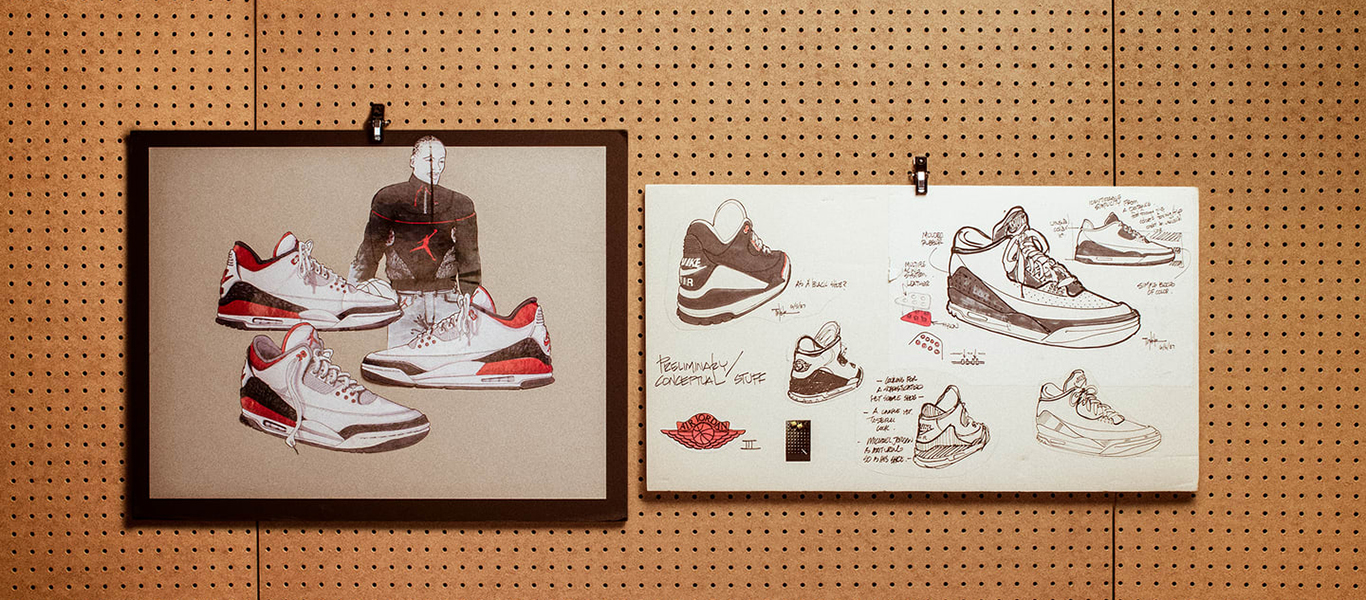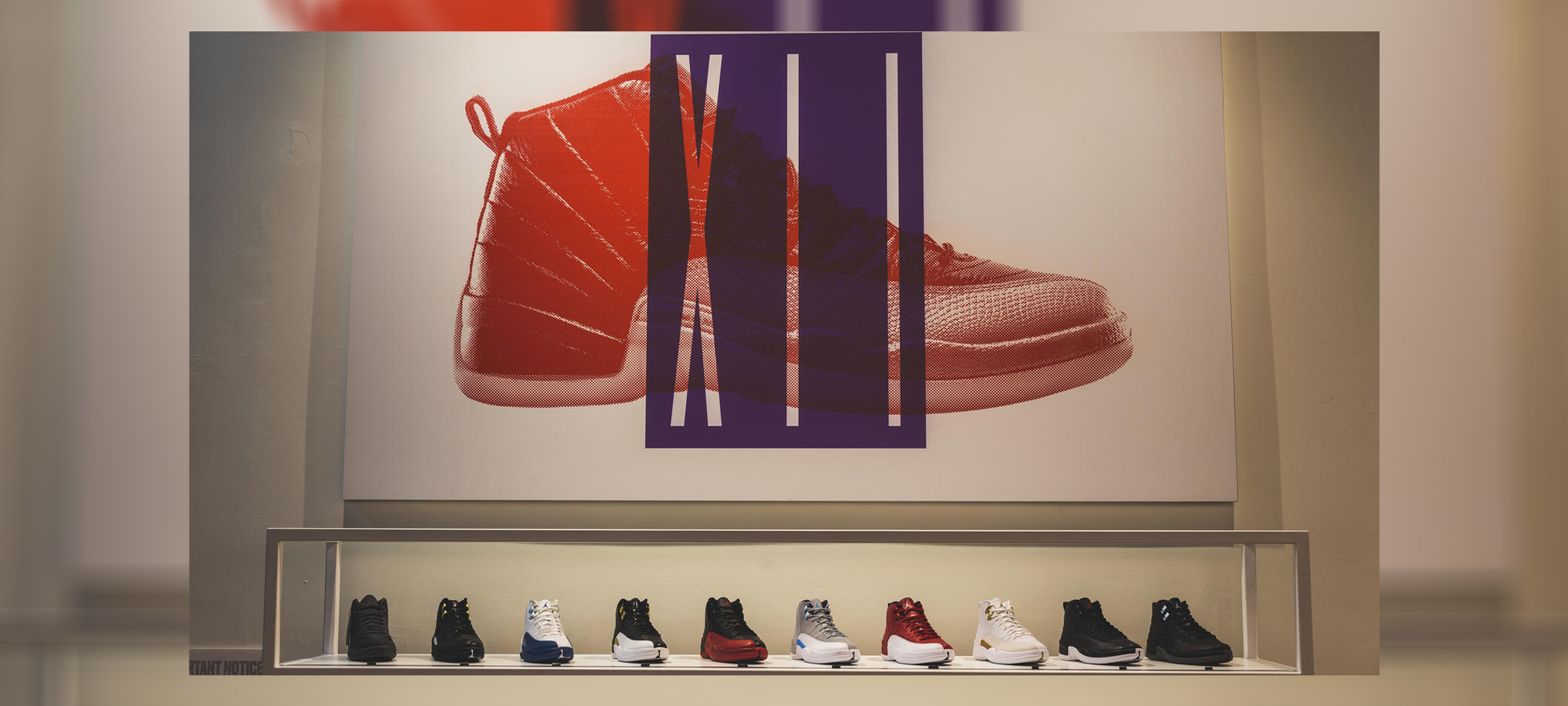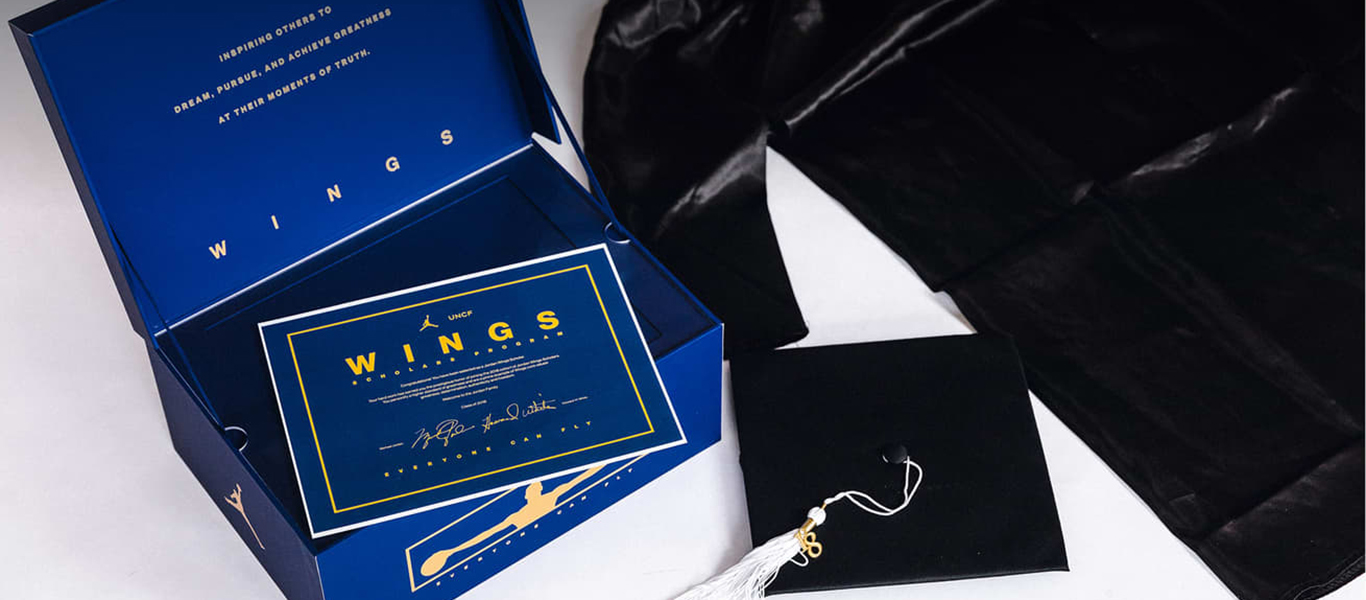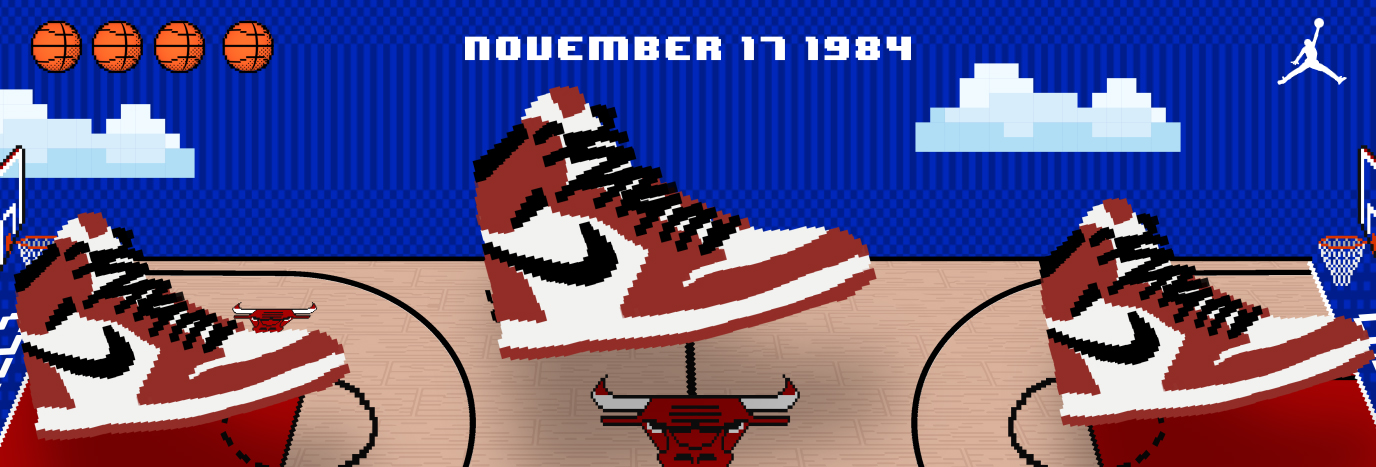The first 20 years of Nike’s existence as a sports apparel company saw the company focus primarily on your standard running shoe. To complement the general vanilla nature of the business, Nike produced sports shoes that were mostly white in color. Occasionally, a pop of color would show up by way of a different logo, or some kind of support element but, for the most part, it was plain vanilla. But all that was about to change.
For decades, George Orwell’s iconic dystopian social science fiction novel 1984 was required reading for many— a story about several themes but, perhaps most notably, about violations of freedom of expression.
In 1984, Apple Macintosh released what is arguably considered to be the most influential commercial, aptly named “1984” — a dystopian future ruled by a “Big Brother” figure on television, and again the theme surrounding freedom of expression was key. (Note: this theme actually resulted in Orwell’s estate filing a cease-and-desist letter to Apple later in 1984.)
The running shoe market was slowing down, so if Nike was to remain viable the brand was going to have to step up its foray into the world of basketball sneakers. With Orwell’s novel and Apple’s iconic commercial as background, 1984 was about to become the year where freedom of expression would be tested. Victory here would mean a gateway to a timeless, iconic brand. Failure simply wasn’t an option.
The Swoosh zeroed in on a kid out of North Carolina, an unknown entity that founder Phil Knight barely knew about — a bold move, really. Michael Jordan had made a name for himself at the University of North Carolina when he made the game-winning shot in the 1982 NCAA championship game against Georgetown.
In the summer of 1984, Nike executives met with the Chicago Bulls’ first-round pick. Famously, this was the meeting Jordan didn’t want to have. His reasoning was that Converse, his college footwear brand, was too busy with established NBA players, and adidas, the brand he wore in high school, acted like it didn’t want any part of him. Legend has it that Deloris Jordan, Michael’s mom, gave him that mom brand of tough love and forced him to get on the plane to meet Nike. As that plane soared to Beaverton, OR during the summer of 1984, it flew into the history books.
Jordan, albeit begrudgingly, ended up signing a deal with Nike. And not just any run-of-the-mill deal. The reported $500,000, five-year deal also included royalties for every pair of Air Jordans sold. Nike was making a statement — Michael Jordan was its ticket to the top of the basketball sneakers marketplace.
Sticking It To The Man
Much of Jordan Brand’s legend and lore traces its origin story here. Jordan’s on-court play was noticeable right away, but it was his footwear that really got the most attention. Jordan played in the Air Jordan 1 in 1984, its iconic red and black features flying against what the NBA deemed to be acceptable — it wasn’t the mandatory plain vanilla white. Its first on-court appearance came on November 17, 1984 against Philadelphia in what we now know to be the “Chicago” colorway.
Akin to the televised Big Brother in Apple’s 1984 commercial, then-NBA commissioner David Stern came down hard on Jordan and Nike by fining the Bulls $1,000 for the first illegal wear, and $5,000 for each subsequent one. Freedom of expression was being challenged.
Nike knew a marketing opportunity when it saw it. The Swoosh famously paid each of Jordan’s fines, which helped to spark media headlines and subsequently led to an iconic branding commercial of its own.
“On September 15, Nike created a revolutionary new basketball shoe. On October 18, the NBA threw them out of the game. Fortunately, the NBA can’t stop you from wearing them. Air Jordans. From Nike.”
Nike released several thousands pairs of Air Jordans. Behind its viral marketing strategy — because that’s what it was — the sneakers sold out immediately. Nike’s gamble on an unknown entity in Michael Jordan and a potential legal dispute with the NBA had paid off, big time.
Freedom of expression was here, and it was good for business.
As Michael Jordan went, so did the Air Jordan line. His on-court exploits paired with innovative and ground-breaking design elements in subsequent sneaker iterations resulted in an era of unheralded success for Nike.
Continuing its marketing awareness, Nike created a unique logo— known as the “Wings Logo” — for its Jordan line, a basketball with wings stretching from both sides and “Air Jordan” in print in a banner above the basketball. Based on a 1984 Life magazine photo shoot from the Summer Olympics, Nike eventually updated the “Wings Logo” with a silhouette of Michael Jordan soaring through the air in an exaggerated mid-air ballet move — the “Jumpman” logo is now almost as a recognizable brand icon as any other sports brand icon.
The Tinker Hatfield Connection

If Jordan Brand traces its basketball marketplace success with Michael Jordan’s on-court stellar performances, it definitely traces its design success with an architect-turned-designer named Tinker Hatfield.
Hatfield designed the Air Jordan III, widely regarded as perhaps the most beloved basketball sneaker of all time, and it came at a crucial time for Nike. By 1988, Michael Jordan was rumored to be unhappy with the direction of his signature line and was looking to jump ship to another brand. Seeing Tinker’s iconic Air Jordan III design changed all of that for Jordan, the man and the, ultimately, the Jordan Brand.
The iconic moment that really cemented who Michael Jordan was for generations to come happened during the 1988 NBA Slam Dunk Contest. Michael Jordan’s famous free-throw line dunk happened with a pair of Air Jordan IIIs on his soaring feet. That dunk, with those sneakers, vaulted His Airness and Jordan Brand into new, uncharted waters. Freedom of expression, both in design and on-court play was paying off — and the era of the Player becoming the Product was here.
From The Court To The Culture

When Jordan and the Bulls finally broke through with their first of a half-dozen championships in 1991, the Air Jordan VIs on MJ’s feet instantly took on a cultural clout of their own.
Championships would eventually become part of Jordan’s resume, and with each successive team achievement — and various individual milestones — the Jordan brand would experience a meteoric rise to levels no other sports brand had ever experienced.
Off the court, the Air Jordan line had become a fixture in Black culture as much, if not more, than it had in the basketball community. Jordan sneakers were the ultimate collectors’ dream, an iconic part of hip-hop fashion. When a rapper from Philadelphia named Will Smith snagged a primetime television sitcom deal, The Fresh Prince of Bel Air was often seen wearing Air Jordans as a symbol of his freedom of expression. Some themes just never fade away.
Despite Jordan stepping away from basketball during the 1993-1994 season, Nike continued forward with a new release, guided by another Tinker Hatfield design. While Jordan never wore the Air Jordan IX on the basketball court, he did wear a baseball cleat version during his time in pro baseball. The brand’s sales remained steady despite its namesake’s absence from basketball. The brand was strong.
As Jordan continued to build his legend, it seemed like each storied moment was tied to the sneakers he was wearing. During Jordan’s famous 1997 NBA Finals game, which he played ill due to pizza-related food poisoning the night before, his iconic Air Jordan 12s were dubbed the “Flu Game” 12s, serving as a marketing bonanza no marketing firm could have ever dreamed up on its own. Sales by 1991 topped $200m a year by some accounts.

Design innovation took on many forms for the Air Jordan line. Taking inspiration from exotic race cars, to taking inspiration from women’s designer shoes, Jordan Brand became proficient in the art of storytelling with the line of sneakers. A prime example of this is the design behind the Air Jordan X, a sneaker designed when Jordan was still retired from basketball. The sole of the shoe featured 10 stripes listing Michael Jordan’s finest feats. This visual expression of who Michael Jordan the player was as well as what Jordan Brand was all about resonated with the buying masses.
Not tied to just the Air Jordan line of basketball sneakers, the brand has branched out to produce shoes collaboratively with celebrities (think Spike Lee and the Jordan Spiz’ike shoes), as well as producing packages in subsequent years.
As Jordan Brand soared in rare air, the brand began branching out to other sports besides basketball. The brand has apparel deals with NASCAR drivers, tennis stars, boxers, and collegiate football teams.
Pushing boundaries has been and remains a Jumpman hallmark. Artist collaborations with the likes of DJ Khaled, Eminem, Travis Scott, and Drake have opened doors to a marketplace outside the traditional sports arena. Designer collaborations with popular streetwear designers like Don C (of Just Don brand), and Virgil Abloh (of Off-White fame) are just a few of the collaborators that have elevated Jordan Brand beyond the scope of sports apparel.
Philanthropy has also been a priority for the company. Jordan Brand partners with the United Negro College Fund through the Jordan WINGS program that helps to fund the higher education of underprivileged youth. A collection of special sneakers has helped to fund the education of almost 2,000 students.

The company’s most recent, and most public, philanthropic endeavor is the recent announcement that Michael Jordan and Jordan Brand will donate $100 million over 10 years to social organizations that are dedicated to ensuring racial equality. Nike also pledged another $40 million over four years to support Black communities.
What started off as a gamble on an unknown kid out of North Carolina, during a time when freedom of expression was a theme the country was exploring, has morphed into a brand that took that very theme and melded it with how the kid from North Carolina expressed himself through basketball. More than three decades years later, that marriage continues to produce innovative products across several marketplaces.
The plain vanilla era is long gone. Jordan Brand is firmly grounded in being able to express itself in new innovative, boundary-pushing avenues.
And that’s freedom.
Mike Taddow is a Dallas-based freelance writer, a lifelong sneaker enthusiast and Air Jordan III aficionado.



